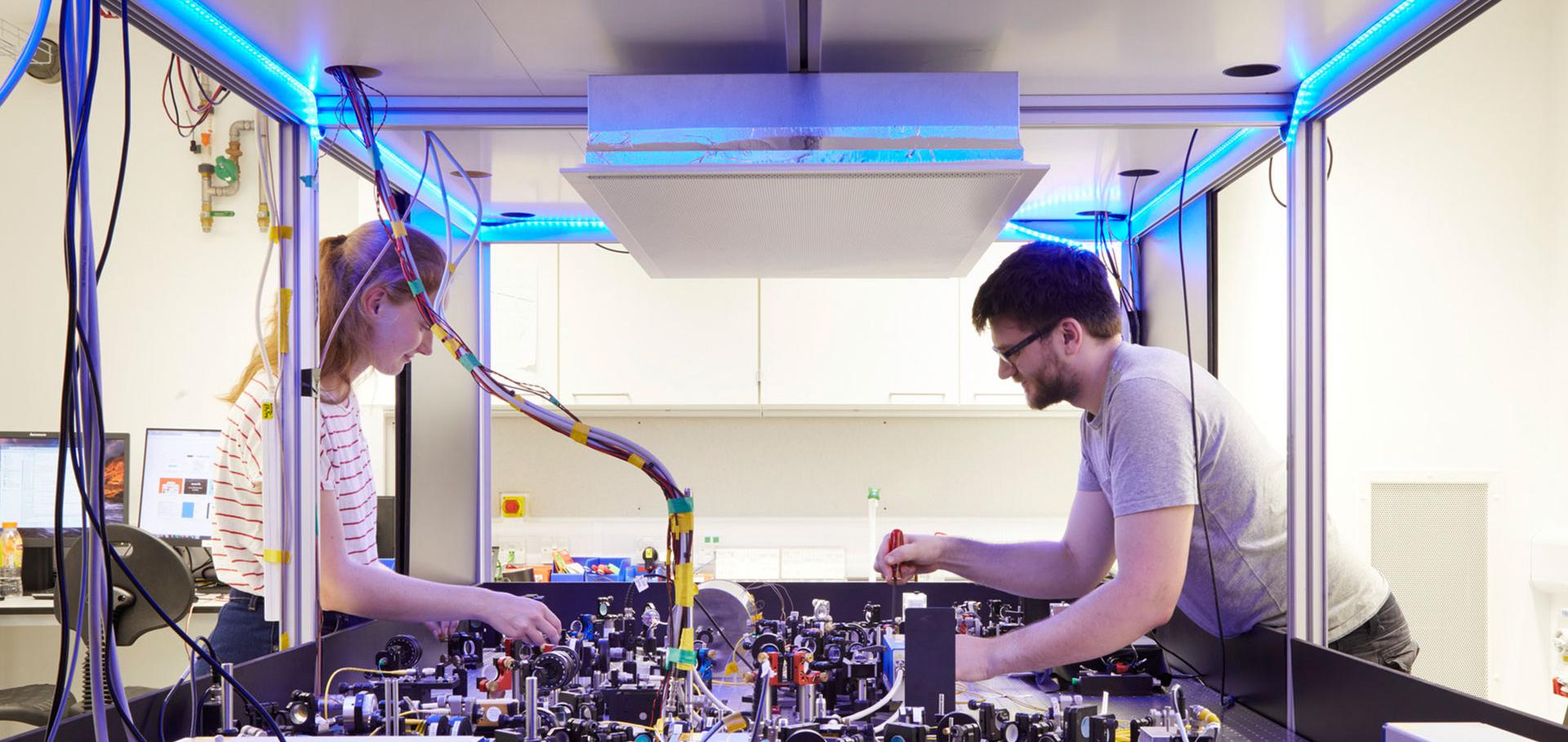Temperature Equilibration Due to Charge State Fluctuations in Dense Plasmas
Institute of Electrical and Electronics Engineers (IEEE) 00 (2021) 1-1
A novel method to measure ion density in ICF experiments using X-ray spectroscopy of cylindrical tracers
Physics of Plasmas AIP Publishing 27:2020 (2020) 112714
Abstract:
The indirect drive approach to inertial confinement fusion (ICF) has undergone important advances in the past years. The improvements in temperature and density diagnostic methods are leading to more accurate measurements of the plasma conditions inside the hohlraum and therefore to more efficient experimental designs. The implementation of dot spectroscopy has proven to be a versatile approach to extracting spaceand time-dependent electron temperatures. In this method a microdot of a mid-Z material is placed inside the hohlraum and its K-shell emission spectrum is used to determine the plasma temperature. However, radiation transport of optically thick lines acting within the cylindrical dot geometry influences the outgoing spectral distribution in a manner that depends on the viewing angle. This angular dependence has recently been studied in the high energy density (HED) regime at the OMEGA laser facility, which allowed us to design and benchmark appropriate radiative transfer models that can replicate these geometric effects. By combining these models with the measurements from the dot spectroscopy experiments at the National Ignition Facility (NIF), we demonstrate here a novel technique that exploits the transport effects to obtain time-resolved measurements of the ion density of the tracer dots, without the need for additional diagnostics. We find excellent agreement between experiment and simulation, opening the possibility of using these geometric effects as a density diagnostic in future experiments.Generation of photoionized plasmas in the laboratory: Analogues to astrophysical sources
Proceedings of the International Astronomical Union Cambridge University Press (CUP) 15:S350 (2020) 321-325
Abstract:
Implementation of a novel experimental approach using a bright source of narrowband X-ray emission has enabled the production of a photoionized argon plasma of relevance to astrophysical modelling codes such as Cloudy. We present results showing that the photoionization parameter ζ = 4ÏF/ne generated using the VULCAN laser was ≈ 50 erg cm s-1, higher than those obtained previously with more powerful facilities. Comparison of our argon emission-line spectra in the 4.15-4.25 Å range at varying initial gas pressures with predictions from the Cloudy code and a simple time-dependent code are also presented. Finally we briefly discuss how this proof-of-principle experiment may be scaled to larger facilities such as ORION to produce the closest laboratory analogue to a photoionized plasma.Modelling burning thermonuclear plasma
Philosophical Transactions A: Mathematical, Physical and Engineering Sciences Royal Society 378:2184 (2020) 20200014
Abstract:
Considerable progress towards the achievement of thermonuclear burn using inertial confinement fusion has been achieved at the National Ignition Facility in the USA in the last few years. Other drivers, such as the Z-machine at Sandia, are also making progress towards this goal. A burning thermonuclear plasma would provide a unique and extreme plasma environment; in this paper we discuss (a) different theoretical challenges involved in modelling burning plasmas not currently considered, (b) the use of novel machine learning-based methods that might help large facilities reach ignition, and (c) the connections that a burning plasma might have to fundamental physics, including quantum electrodynamics studies, and the replication and exploration of conditions that last occurred in the first few minutes after the Big Bang.Calculating opacity in hot, dense matter using second-order electron-photon and two-photon transitions to approximate line broadening
Physical Review Letters American Physical Society 125:14 (2020) 145002


